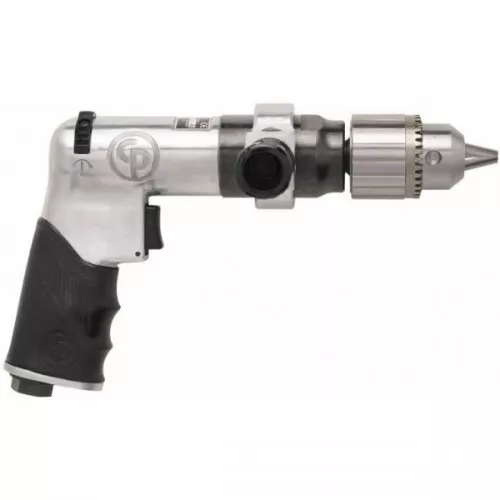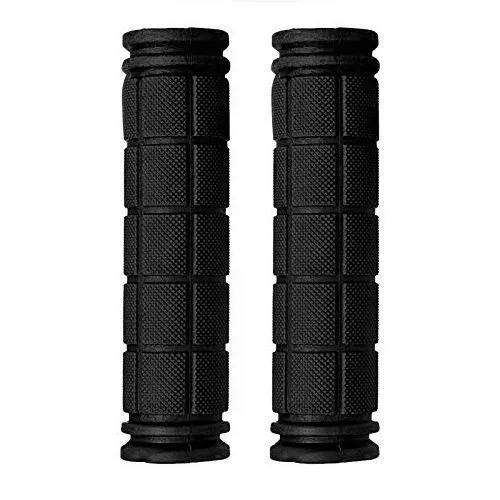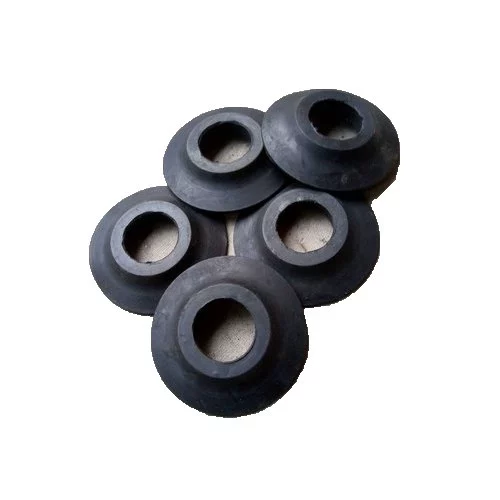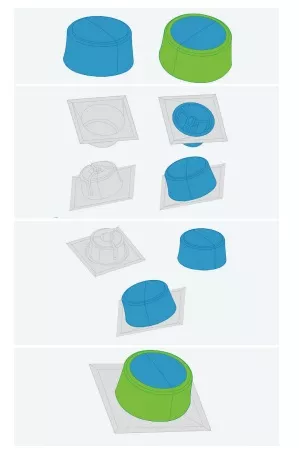Overmolding is an injection molding process where you cast a layer of resin (usually a rubber-like plastic known as TPE) over an already molded or machined material to give it properties it doesn’t singlehandedly possess.
Although this process is cost-effective and helps to provide excellent adhesion between materials, it requires proper planning. For example, the machinist has to pick the right materials to carry out the part’s function and attain maximum adhesion. This is one of the reasons why the machinist has to plan the overmolding design guide properly.
Due to the complexity of the design, you need to be careful when making the overmold design. This article will help give useful tips on the principles you should consider when making your overmolding design guide.
Factors to Consider Before Overmold Design
When starting your overmolding design guide, you must consider a few factors that will help make the design turn out successfully. Examples of such factors include:
Part Function
Designing an overmolding part starts with fully comprehending the function of the part. To be able to do this, you should ask yourself some questions about the part such as:
1. What is the intended goal for the part?
Understanding why you want to design the part is very vital to the design part. Due to the wide application of overmolding, knowing your product’s goal is essential in knowing the process to use. For example, if you plan to mold a seal on a water-resistant case, a water-proof seal is the product’s goal.
2. What type of exposure will the part face?
You should also consider the type of exposure your product will face in the ‘line of duty before making the design. For example, if the part will face harsh radiation like UV light, you can use specific plastics for this type of product.
3. Why are you overmolding the part?
The reason you’re using overmolding for the part will also help determine how complex the design should be. For example, when making a TPE overmolding design guide for a TPE (rubber-like) to be cast on a handle, the intended use of such contraption is either for vibration absorption, ergonomics, grip, or comfort. Answering this question satisfactorily will help choose the right material and map out your overmolding design guide properly.
4. Do you plan to make the part on a large scale?
If you plan to take production on a large-scale basis, you also have to consider this when making your overmolding design guide. For example, an overmolding part meant for vibration dampening will have a thick wall, which will require more material and take a longer cycle time to produce each part. Making such a product could be very expensive, but it might be worth the price if you only want a few pieces.
Part Scenario
After ensuring your part’s function fits in with your design, the next step is to examine the stance in which you will use it and how that will affect its physical features. The four common scenarios in which we use overmolding products include:
1. Adding Grip to a Substrate
Products such as drills, garden hoses, or kitchen utensils need an amount of grip to help the user control the product even in wet conditions. In these scenarios, the best way to add grip to these products is by casting a rubber-like plastic over their handles. This type of process might not require much material and only requires low-quantity production most time.

2. Comfort
When adding grip to a substrate, it also serves as a source of comfort when using the product. So, this scenario is similar to the former in most cases. The most popular example of products that combine both scenarios is the rubber grips on bicycle handles. This scenario also requires minimal materials and only requires low-scale production in most cases.

3. Sealing
Making an overmolding product for this scenario will require a longer cycle time and more material. These seals usually have water-resistant properties and need to achieve maximum adhesion with the substrate. Before designing this type of part, you have to find the material that would give the best adhesion with the substrate and provide the best water-proof capabilities.

4. Vibration Dampening
This type of use requires the most material and has the longest cycle time. This is because the TPE part to be produced has to be thick enough to absorb the substrate’s vibrations you want to cast it on. Clients apply this scenario to high-energy machines like pumps and drills.
Why Should You Choose Overmolding?
Before even starting the overmold design, you should determine if overmolding is the best manufacturing process that fits your product’s manufacture the most. If your product’s goal is any of the reasons below, you should choose overmolding as your manufacturing process.
1. If you want to create a single part from multiple materials.
2. If you want to improve the ergonomics and feel of an already-made product.
3. If you need to add a type of design to a ready-made product.
4. If you need a cost-effective manufacturing process.
5. If you would like to improve safety when using the product (or absorb shock and vibrations).
Vital Design Considerations for Overmolding
After going through the pre-design considerations for overmolding, there are also some other factors that you should consider while making the design. Examples include:
Bonding
Bonding between the resin and the already molded/machined material (substrate) makes the bulk of the overmolding process. There are two primary ways in which this bonding occurs:
1. Chemical method
The chemical method occurs at the molecular level and involves quite a lot of factors. Even though it is stronger compared to the mechanical method, it is relatively harder to achieve. Examples of factors that affect chemical bonding include the degree to which the resin can wet the substrate. The degree of wetting increases the level of contact and allows stronger bonding.
Another factor that affects chemical bonding is the presence of additives, fillers, or certain surface treatments that could interfere with the chemical bond’s strength.
Suppose you want to use chemical bonding as the preferred choice of bonding for your overmolding process. In that case, it is advisable to contact material suppliers and molders to know the most compatible materials that can provide maximum adhesion.
2. Mechanical method
Mechanical bonding occurs at the physical interface of both materials. One method is to make holes, grooves, or cuts in the substrate which the resin can flow into. After the resin cools in these holes, it locks into these holes. To further strengthen the mechanical bond, you can wrap the overmolded material around the substrate. Also, try to ensure the overmolded material surfaces aren’t exposed, as this could lead to peeling.
Overmolding Materials Compatibility
Materials
While there are many combinations of substrate and resin materials that are compatible, other factors affect resin choice apart from compatibility and adhesion. If you only want to cushion the substrate, the resin’s thickness is just as essential as its softness. The best way to measure a material’s softness is the flexural modulus, which is the measure of a material’s resistance to bending. The softness of the material is inversely proportional to the flexural modulus of the material.
While you can find various overmolded materials suitable for overmolding applications, some resins like Versaflex are specifically suited for overmolding processes. If your goal is to enhance a substrate’s grip, the best way to choose a resin is by determining its coefficient of friction. The coefficient of friction of a resin is directly proportional to its tactility (the degree of grip it possesses).
Principles
The type of overmolding method used for the manufacturing process is also an important factor to consider when mapping out the overmolding design guide. There are two primary overmolding methods:
1. Two-shot molding
This method involves molding the substrate using a material and rapidly overmolding it with another material. The whole process uses only a single mold and is an automated process. There are three types of two-shot molding: transfer overmolding, rotational overmolding, and core-back overmolding. The three methods utilize chemical bonding by casting the resin on a warm substrate. This technique strengthens the chemical bond. However, machinists use it only for large-scale productions above 10,000 parts due to its high operating costs.
2. Pick-n-place molding
This method uses two molds and works in batches. The first batch involves molding the substrate parts and manually placing them in the second mold. The second batch then involves injecting the resin on the molded substrate to produce the finished parts. Pick-n-place molding is more cost-effective as it is a manual process and doesn’t involve robotic machines like the former. However, it might not attain maximum adhesion and can only handle low production volumes of up to 10,000 parts.

The Advantages of Using Overmolding
Although it requires meticulous planning and complex plastic overmolding design guidelines, it is one of the best injection molding processes. Here are a few reasons why:
1. Low Costs
Overmolding can minimize production costs. This is because it can use multiple parts to make a single product using assembly, unlike standard injection molding. Even though the mold design is expensive, it eliminates having to assemble the same part over a thousand times. With the multiple varieties of materials available for overmolding, you can always find the cost-efficient pair for your production process
2. Rapid Cycle Times
Once you create the molds for overmolding, the remaining parts of the process are faster than those that need assembly. While the two-shot molds can take months to complete parts’ production, the pick-n-place overmolding only requires a few weeks for production. However, the latter can handle larger volumes of production. In either case, after the molds’ production, the production process is sped up quickly compared to standard injection molding processes.
3. Ideal for Low-Volume Production
Pick-n-place overmolding is a perfect choice for low to mid-volume production. Although it is a more labor-intensive choice because of the manual labor involved, it doesn’t have high operating costs associated with two-shot overmolding. If you need prototypes of the product before full-scale production begins, pick-n-place overmolding is a better choice. Also, if you need to redesign the part, pick-n-place productions allow you to redesign the molds at lower costs than two-shot molds.
RapidDirect Overmolding Services
Do you have an overmolding or injection molding project at hand and need a company with excellent machines and a workforce to perfectly execute this job? At RapidDirect, we fit that description perfectly.
We offer you cost-effective service with premium client satisfaction. We provide you with overmolding services for different materials and can produce both low-volume prototypes and high-volume parts. If you submit your design to our website, you can get a quote within 12 hours.
At RapidDirect, we know that an excellent communication system between our clients and us is the secret to getting the parts just right. Therefore, you’ll get all the technical support needed from us during protection. Our sheet metal engineering team has been in the industry for decades, with over 20 years of experience. Hence, besides offering the quality service you desire, we’ll also provide you with technical suggestions for your projects.
Conclusion
Overmold design is one of the most important parts of an overmolding project. Getting it right is vital to the success of the whole production process. To achieve this, you can choose to handle the design yourself.
However, this will take a long time and increase the duration of production. A better choice is to outsource to a well-experienced company like RapidDirect, which will help you make an excellent design and deliver an outstanding report within weeks. If you still need some help knowing more about overmolding design guides, you can reach out to us.
FAQs
A: Plastic Overmolding is a type of injection molding where a resin (usually a rubber-like plastic) is molded onto another material (mostly a rigid plastic/thermoset). If the two materials are compatible, they form a strong chemical bond that will serve its purpose excellently.
A: Insert molding follows just the same process as overmolding. However, it uses a metal substrate, unlike the plastic used in overmolding.


